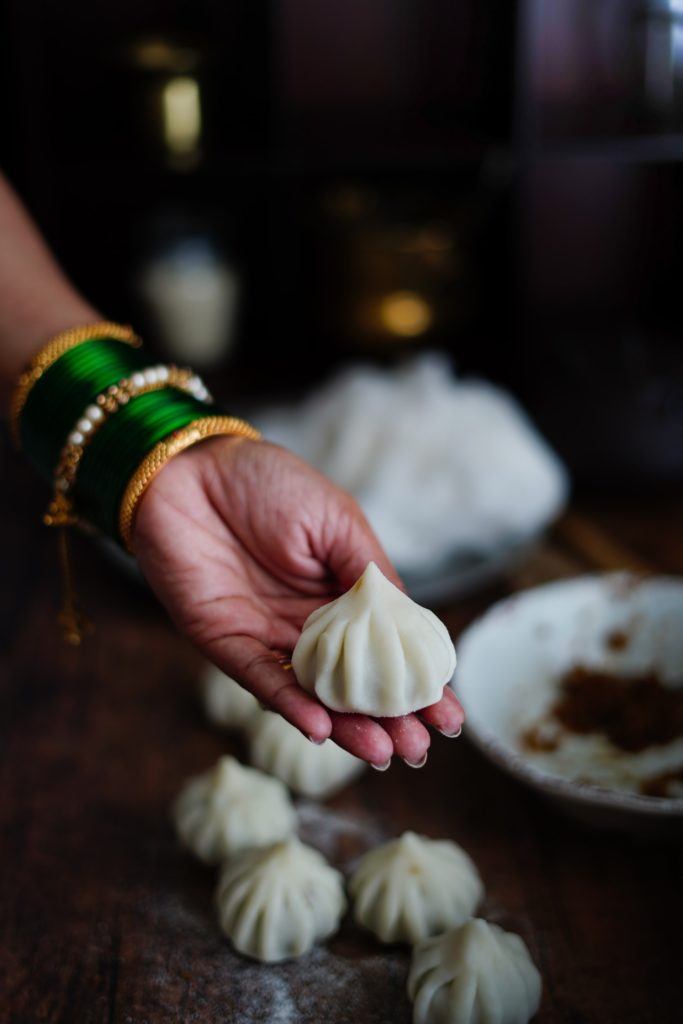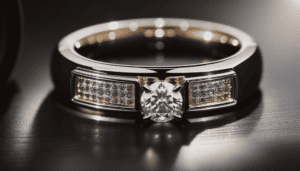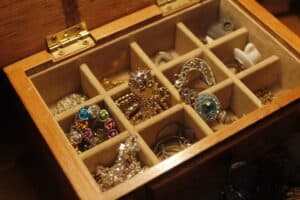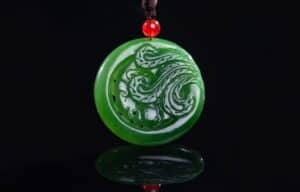Have you ever wondered how much dirt and germs your everyday rings, bracelets, or other jewelry pieces might hold? If you closely inspect your jewelry under a microscope, especially your finger bands and bracelets, you’d be appalled to see the amount of dirt and bacteria they hold.
When these disease-carrying germs get transferred from your jewelry to the food or utensils while you cook, they can make the food items unhygienic and unhealthy. This is why many experts recommend that you should never wear jewelry in the kitchen.
Apart from this, many food workers across the globe get strict instructions related to wearing jewelry while working to ensure that the food gets prepared safely without any hygiene issues.
Can you wear jewelry when in the kitchen?
From a household cooking perspective
Wearing all sorts of jewelry – chains, rings , bracelets earrings pose a lot of risks not just to the consumers of the food in terms of contamination, but to the worn jewelry itself. This is why it is best to remove all jewelry before you head off to dawning the cook’s hat.
- RISK OF JEWELRY FRAGEMENTS FALLING IN : Many chunky earrings, danglers, chains , bracelets and even rings can have beads, stones or other parts which are not that strongly connected to the main piece and can break-off and drop into the food items, and find a way on the plate of consumers. This poses a risk of both choking as well as infections.
- RISK OF TOXIN BUILD UP : If you have a habit of cooking with your rings, bracelets or chains on, there is an often neglected risk of food particles and chunks sticking into the hidden corners and creeks in them. This can build up over time and lead to both bacterial growth and even toxin release, which can find it’s way into your food . This is a commonly neglected but a very potent risk of wearing jewelry in the kitchen.
- IMMINENT BREAKING THREAT TO THE JEWELRY : Working in the kitchen sees you working with hard , piercing and pointed objects such as appliances, knives, peelers etc. , which can chip or scratch the softer parts of your rings or bracelets. Also, the steams and vapors being generated in the kitchen can condense on earrings and chains, causing deposits and long term damage to their exteriors.
From the perspective of commercial kitchens
Numerous food preparation services, restaurants, hotels, and cloud kitchens in the hospitality business, work relentlessly to ensure they offer the best services to their customers. Also, a principal requirement for people working in this sector is to ensure that the food prepared remains safe and hygienic for the people to consume.
It is why restaurants, kitchens, and hotels in many countries have strict policies related to wearing jewelry while serving as food workers. Nevertheless, you must note that the policies regarding wearing jewelry to work in the food business differ from one food company to another and from one country to another.
Moreover, depending on where a food business remains established, there may be statutory provisions preventing the wearing of any jewelry or metallic accessories within food premises. Hence every food business owner must go through the local food safety regulations for better guidance. However, according to GFSI ( Global Food Safety Initiative), if a food business wants to serve a third party, it must implement a ‘no jewelry’ policy.
Listed below is a tabular representation of legal restrictions around wearing jewelry in restaurants, kitchens, and hotels.
COUNTRY OR GEOGRAPHY | LEGAL RESTRICTIONS | EXEMPTIONS |
United States (US) | For restaurants and hotels operating in the United States, it is mandatory to have a jewelry policy where food handlers in processing operations cannot wear jewelry while entering the food premises. | The only exception to this legal requirement is a plain wedding band or medical bracelet that food workers can wear under their gloves. |
United Kingdom (UK) | The food hygiene authorities in the United Kingdom made it specific for restaurants and hotels to run in a hygienic and safe practice with a strict 'no jewellery' policy.
| Wedding rings |
European Union (EU) | Under the EU, every member country is free to build their local regulations regarding allowing which jewelry pieces to work.
| |
Australia and New Zealand | Both Australia and New Zealand fall under the jurisdiction of the Foods Standards Code (FSC). This legislation attempts to serve hygienic food by introducing some stringent policies concerning food workers wearing jewelry.
| The only permitted piece of jewelry is a plain wedding band with no or very limited portrusions. |
Also, note that while the detailed constitutional specifications differ slightly between nations, the universal principles of food health remain the same, based on the Codex Alimentarius. The regulations will likewise be adaptable to accommodate the size of a business so that small companies have more manageable conditions.
What should you not do in the kitchen while wearing jewelry?

Photo by Prachi Palwe on Unsplash
Wearing jewelry while working in the kitchen is a strict no as your jewelry can act as a harbor for bacteria and other germs that might spread into the food items prepared. However, if you wear some jewelry while working in a kitchen, ensure that you avoid touching them often.
- FREQUENT TOUCHING OF JEWELRY : Touching your jewelry again and again while preparing meals or handling them can imperil food safety. There are higher odds that your ring or bracelet might fall into the food items.
- KNEADING THE DOUGH : While working in the kitchen, you should never knead the dough with the rings on as it will not only make the food infected, it can even corrode and damage your jewelry.
- MIXING WITH HANDS : Mixing veggies, or sauces with hands while wearing hand jewelry pieces like rings and bracelets can cause deterioration to the jewelry , and also may contaminate the edibles that you are trying to mix.
- WORKING WITH FUMES AND VAPORS : Fumes and vapors are an integral part of any kitchen ambience and it is really hard to keep away from them while you work in one. However, these fumes may be more than just steam or vaporised water, and can lead to deposits and layers forming on your jewelry pieces, as they start to condense.
What amount of jewelry is acceptable in a kitchen environment?
According to the FDA (Food and Drug Administration), you can only wear plain wedding bands while working in a kitchen. It is especially crucial when you are working as a professional food handler. Also, while you can wear any jewelry you want in your home kitchen, it is not recommended to wear too much jewelry when working in the kitchen. Apart from this, almost every restaurant or hotel in the foodservice industry prohibits its workers from wearing the following:
- Any metallic ring, except the plain wedding band
- Bracelets
- Any other artificial jewelry
- Earrings
- Hair accessories such as metallic hairpins (for female staff)
- Body piercing on nose, ears, chin, and lips
The reason why hotels and professional food businesses prohibit these jewelry items is they contaminate the food items. They further have a risk of choking when dropped accidentally in the prepared food. In addition, note that food workers with some medical issues, such as epilepsy, remain permitted to wear emergency bracelets or chains that they need to keep covered while working in the kitchen.
What type of jewelry is acceptable in a kitchen environment?
We know that food manufacturing companies, restaurants and food and hygiene control and regulation organisations across the world agree that it is simple, obstruction or groove free wedding bands are the only type of jewelry food workers and cooks are allowed to wear in the kitchen.
- TYPE OF JEWELRY METAL & COMPOSITION
In terms of the metals which are alright to be worn as a part of jewelry in kitchens, silver , bronze and copper are the safest ones, as these are not reactive or catalyzed by the exposed elements in any general kitchen.
- STAY AWAY FROM WEARING GEMS AND STONES
- WEAR GLOVES WITH RINGS
- SANITIZE AND CLEAN JEWELRY BEFORE COOKING
Should you wear rings while cooking?
Even when you can wear plain wedding bands while working in professional kitchens and even your diamond rings in a home kitchen, it is highly advisable to remove them when you knead or work on a mixture with bare hands.
A research study conducted by Est1897 measured the amount of bacterial growth on worn rings, bracelets and watches and the results were astonishing. Worn finger rings were seen to contain numerous bacteria and germs such as Black Mould, Fungal Species and many more. All of these are potent enough to contaminate your food items and poses a grave risk of contamination to the consumers of the food made or served with such rings worn. In addition to this, there is also the risk of choking if the ring or a fragment(for chunky rings with potruding parts) of it gets dropped accidentally in food. Hence it is a good idea to remove them while cooking.
In addition, wearing rings while cooking is likewise not suitable for your jewelry as the ring metal might react to the food metal and corrode, or the heat might damage it.

Photo Source : Est1897 Study
Can you wear nose ring in the kitchen?
Many restaurants and hotels in the hospitality industry have individual policies about wearing a nose ring in the kitchen. However, when speaking generally, many foodservice companies ask their workers to remove any visible piercing, including nose rings, earrings, and lip piercing.
The reason behind this rule is that even when these piercings remain attached to your body parts, they still hold the potential to contaminate the food items and pose a significant health risk.
TAPE IT AWAY : Also if you happen to have your nose pierced and are intending to work in your domestic kitchen, taping it up nicely is a good way to ensure it doesn’t come in contact with the food or the fumes in the kitchen. While many professional kitchens may not allow this, it is worth checking if they do.
Conclusion
This has been a good one! We saw that professional kitchens across the world have a very strict in terms of having a ‘no-jewelry’ policy, meaning no sort of jewelry is allowed to be worn by those cooking and serving. This is very well advised even for domestic kitchens, as there are are risk of choking and toxin or organic attacks to the consumer s as a result of servers and cooks wearing jewelry, and also to the jewelry itself.
If you do want to still go ahead and wear your jewelry in the kitchen, go very minimalistic, and stick to just the plain ring without any chunky parts or stones. Also, do take increased precautions and cover the jewelry with tape so that the exposure to the food is minimized as much as possible.
Hope you learnt a few things through this one. Please tell us if this one added to your knoweldge.
Keep dazzling ! 🙂




